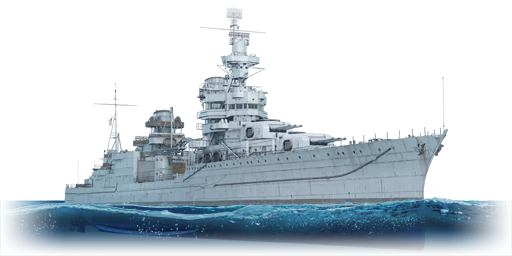The USS Portland, also known as "Sweet Pea", was the lead ship of her class. Laid down in February 1930, she was commissioned in February 1933 and went on to serve throughout World War II. Crucially, she played a vital role in the opening of the war in the Pacific, screening the carriers at the Battle of the Coral Sea, Midway, and Guadalcanal. She also played a role in the Aleutian Campaign before returning for the Battle of Leyte Gulf. With the cessation of hostilities, she helped transport troops back to the US before reporting for decommissioning in 1946. Notably, Pensacola was one of the few ships that served through the entire war without missing any major battles and also received 16 battle stars; one of the most decorated USN ships of World War II.
USS Portland was introduced in Update 1.97 "Viking Fury". Compared to other heavy cruisers of the same rank, like the USS Pensacola that it succeeds, it has a smaller battery of 9 x 8-inch guns. In exchange, it gains extra 1.1-inch and 20 mm guns, granting a much stronger anti-aircraft battery than the measly heavy machine guns found on others. The main weakness, however, is the weak armour, less than that of many light cruisers, as it had to be sacrificed to accommodate the 8-inch battery on treaty-era heavy cruisers.














